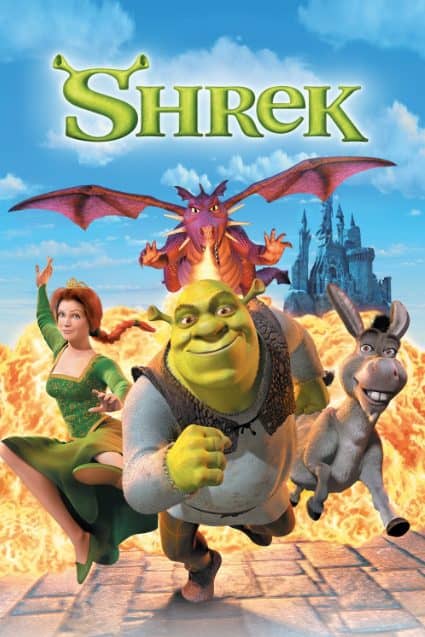When it comes to researching how to write a screenplay, most novice writers will fall into the trap of following generic advice that focuses on hitting specific plot points on certain pages of a screenplay. And these paint-by-the-numbers guides do not lead to profitable screenwriting careers.
As young storytellers set forth on the exciting venture of screenwriting, parents may not be familiar with the common mistake that is probably getting in the way of their child’s writing success.
Fear not, in this article you will learn:
- Steps to take to fix this problem
- How to fast-track your child’s screenwriting success
Let’s get started!
Avoid Starting Off on the Wrong Foot
Your child may learn terms like the three-act structure, the set-up, the midpoint, and the denouement. And they will likely come across tons of information regarding how to properly format a screenplay and the best screenwriting software to use.
They will also probably find standard advice such as the importance of creating a solid logline for their screenplay. As well as creating a well-defined outline and a treatment for their screenplay before writing the first draft.
All useful information is important to understand and implement but it does not cover the main ingredient to crafting compelling screenplays that launch careers.
And I’ll tell you what that is in a sec.
All Novice Writers Miss This Piece Of The Screenwriting Puzzle
In all my years of coaching young aspiring screenwriters (since 2008), this missing piece is something I see all new writers completely miss. Once they experience their lightbulb moment and realize the importance and power of this missing piece, an entirely new world of possibilities opens to them regarding their writing potential.
Okay, so what’s the missing piece to this puzzle?
The missing piece is STORY.
Every novice writer I’ve encountered overlooks the story they want to put out into the world. And the problem results in a mechanical screenplay that just focuses on things happening.
But there is no story.
This oversight is not their fault. I say this because story is often taught the wrong way. Unfortunately, it’s this common mistake that keeps beginners from writing the awesome screenplays they’re capable of.
If your child is going to learn how to create compelling award-winning screenplays that will set them on the path to screenwriting success, they must first master the art of story.
Ready to dive in to learn how?
Let’s go.
The Foundation of Great Screenwriting
Creating a compelling screenplay begins and ends with understanding how to develop a story in a truly engaging way. For this to happen, a writer must first know what a story is. And as obvious as it may seem, most aspiring screenwriters haven’t a clue.
Writers often throw around the question, “What makes a good story?” But before we dive into that, let’s hit the brakes and ask a more important question: What the heck is a story, anyway?
Now, I get it, it sounds a bit out there because, c’mon, we’ve all been hooked on stories since we were kids. In fact, we are wired to love a good story. It’s in our nature.
Through our stories, humankind learns how to survive, form community, and develop empathy.
So, we should all be story experts, right?
Well, here’s the catch.
We might be pros at spotting a killer story, but understanding how to create a great story is a different ball game.
One reason crafting a captivating story is so difficult for new writers is because they are using the wrong definition of story. Many make the mistake of thinking story is a bunch of things happening (plot).
And even worse, a bunch of random things, randomly happening. And this is how they will proceed to write their screenplay–
One event after the other until they reach an unfulfilling ending.
Here’s what new writers need to understand:
Crafting a story is about documenting the emotional journey of the protagonist where they are forced to confront an emotional wound or flaw that’s keeping them from achieving a goal and how they change as a result.
We (the audience) are drawn into a story by watching the internal transformation of a character after watching them go through all the ups and downs of the plot. And how this journey forced them to confront their internal problem and change.
The protagonist is the lead character who drives the story’s main conflict. It is the screenwriter’s job to create a plot that will force this character to deal with their flaw/weakness, overcome it, and change–if the story is tracking a positive character arc.
The main thing they need to understand is that story and plot are not the same.
Plot is basically what happens, and story is the emotional journey of the main character, leading them to a self-revelatory transformation. Plot and story play important functions in the overall development of the main character. (Something I can go into more depth in another post.)
But the point I want to make is that if your child doesn’t understand what a story is, they will not know how to write one–ultimately stopping them from becoming successful writers.
Getting to the Core of a Great Story
To help your child get started on their screenwriting journey on the right foot, there are three important questions they need to answer before they can begin thinking about writing their screenplay.
1. What does the protagonist want?
We all want something, and the protagonist of your child’s story is no different. But there is a difference between what a character wants and what they actually need. When they bump up against each other, we get into great conflict and conflict keeps us engaged.
Here’s a quick example.
In the 2001 animated movie, Shrek, Shrek is an ogre who wants to be left alone in his swamp. But when fairytale creatures are dumped on his property, Shrek goes on a journey to evict them. In the process, he develops a friendship with a talking donkey, falls in love, with a princess, and becomes part of a community.
So Shrek wanted to be alone but needed to overcome his wound of rejection and stop living in isolation.
The Power of Backstory
When a writer digs deep into a character’s backstory, they learn what their character wants. However, this character may not realize what they need on an emotional level (or they may not be willing to deal with the truth) usually both scenarios apply.
Shrek wanted to be understood and not feared. But he developed a hard shell and lived a life of solitude to protect himself.
However, the events in the plot force Shrek to confront his inner wound and overcome it by embracing fellowship. Viola!
The movie Shrek has a compelling story because it resonates and causes us to feel something.
This is the mark of a great story. To cause an audience to feel something.
Until a writer knows what their protagonist will enter the story wanting, they will not understand the internal transformation needed to obtain their goal.
And btw, it’s not always about obtaining a particular goal, it’s really about what the protagonist has learned in the process of trying to obtain their goal.
So it’s important for the writer to know:
- What does the protagonist want?
- Are they aware of what they want or not?
- A singular, specific, concrete goal
2. What internal changes must the protagonist make to achieve their story goal?
This is where the gold treasure of a story is buried.
And it’s the job of the screenwriter to excavate it. They will have to dig deep because their protagonist will usually be completely oblivious to this much-needed change they must undergo.
It’s so important for every screenwriter to understand the emotional journey they will put their character through for this character to face the truth about an internal weakness, overcome it, and achieve what they truly need.
In another 2001 film, Legally Blonde, the protagonist, Elle Woods, goes to Law School to try to win back her ex-boyfriend, but when she ends up graduating from Havard Law School, she finds her self-esteem and self-worth–leaving her ex far behind her.
3. What is stopping the protagonist from overcoming their internal conflict?
Many new writers miss this crucial aspect of a character’s development and it’s so important to the overall story. Identifying what’s getting in the way of the protagonist’s making the necessary change that will help them to essentially live a better life and be a better person.
The writer needs to cause their protagonist to make a series of bad decisions that continue to escalate until they must finally give in and face their core emotional issue. (Just like in real life. How many times have we had to learn things the hard way???)
And what’s going to make this journey so interesting is that this character will typically not know they are misguided. This is the writer’s opportunity to really go deep with their story and get their audience invested in the journey.
Writers will not be able to create an effective plot without first understanding what their character wants and what is getting in their way. And the harder the writers make it for their protagonist to overcome their internal flaws, the better. Because if it’s too easy, it’s boring. And nothing worthwhile comes easy for the protagonist of any story.
So these are some of the building blocks of compelling screenwriting.
There’s a lot more to uncover that my students learn in my Create Awesome Screenplays Professional Mentorship Program.
Okay, so now you should understand the importance of an aspiring writer to understand story but I know some parents may be wondering…
Can a kid write a screenplay?
And the answer is an astounding YES.
Several kids and teens are award-winning screenwriters, have had their films premiered at major film festivals, and have had Hollywood deals.
Writing a great screenplay has less to do with age and more to do with understanding how to develop a compelling story that will emotionally resonate with an audience.
Becoming a professional screenwriter is simply impossible if the writer has not mastered the art of story.
Next Steps
I hope it’s clear how every single aspiring screenwriter must first learn everything they can about STORY.
Proper story development is key to screenwriting success and without this skillset, the logline, synopsis, outline, and treatment will not matter.
If you want to give your child a major headstart on their screenwriting journey while building their skills as exceptional storytellers, grab a free copy of the Magic Story Key, which will help your child lay the foundation of a crafting great story for their screenplay.
Feel free to reach out to me with any questions about my programs.




